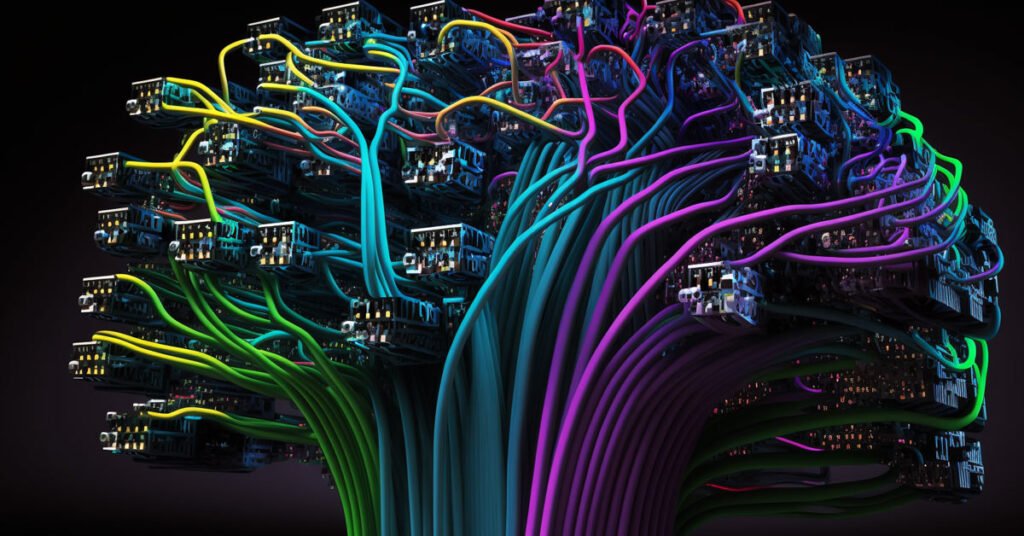Computer vision and image recognition are essential fields within artificial intelligence, enabling machines to interpret, understand, and process visual data. This comprehensive article will provide an overview of the technologies, techniques, and applications of computer vision and image recognition.
Table of Contents
1. Introduction to Computer Vision
Computer vision is the field of study that deals with enabling computers to interpret, process, and understand visual information from the world in a manner similar to human vision. It involves various sub-disciplines and techniques, including:
- Image processing
- Pre-processing techniques
- Noise reduction
- Contrast enhancement
- Image resizing
- Feature extraction
- Edge detection
- Texture analysis
- Shape analysis
- Pre-processing techniques
- Object recognition and segmentation
- Scene understanding
- Motion analysis and tracking
2. Image Recognition
Image recognition, a sub-field of computer vision, focuses on the identification and labeling of objects and patterns in images. It is essential for tasks such as object detection, facial recognition, and optical character recognition (OCR).
2.1 Methods and Techniques
Various methods and techniques are used in image recognition, including:
- Template matching
- Correlation-based methods
- Distance-based methods
- Feature-based methods
- Scale-Invariant Feature Transform (SIFT)
- Speeded-Up Robust Features (SURF)
- Oriented FAST and Rotated BRIEF (ORB)
- Deep learning-based methods
- Convolutional Neural Networks (CNNs)
- Recurrent Neural Networks (RNNs)
- Generative Adversarial Networks (GANs)
2.2 Deep Learning and Convolutional Neural Networks
Deep learning is a sub-field of machine learning that has been highly successful in image recognition tasks. Convolutional Neural Networks (CNNs) are a class of deep learning models specifically designed for image processing and recognition.
- CNN architecture
- Input layer
- Convolutional layers
- Filters and feature maps
- Activation functions
- ReLU (Rectified Linear Unit)
- Leaky ReLU
- Pooling layers
- Max pooling
- Average pooling
- Fully connected layers
- Output layer
3. Applications
Computer vision and image recognition have numerous practical applications across various industries, including:
- Healthcare
- Medical image analysis
- Diagnosis and treatment planning
- Automotive industry
- Autonomous vehicles
- Advanced driver assistance systems (ADAS)
- Manufacturing
- Quality control and inspection
- Robotic automation
- Security and surveillance
- Facial recognition
- Anomaly detection
- Retail
- Visual search
- Inventory management
- Agriculture
- Crop monitoring
- Pest detection
4. Challenges and Future Directions
Despite significant progress in computer vision and image recognition, several challenges and areas of future research remain:
4.1 Challenges
- Lack of annotated data: High-quality labeled data is essential for training machine learning models, but it can be time-consuming and expensive to obtain.
- Variability in data: Real-world data can have considerable variation in lighting, scale, rotation, and viewpoint, which may affect the performance of image recognition algorithms.
- Occlusions and clutter: Objects in images may be partially or entirely occluded, and background clutter can make recognition tasks more challenging.
- Adversarial attacks: Specially crafted inputs can deceive image recognition systems, leading to incorrect or misleading results.
4.2 Future Directions
- Few-shot learning: Developing algorithms capable of learning from a small number of labeled examples could help address the lack of annotated data.
- Unsupervised and self-supervised learning: Techniques that do not rely on labeled data can help in learning useful representations and features from raw images.
- Transfer learning: Pre-trained models can be fine-tuned for specific tasks, reducing the need for large amounts of labeled data and computational resources.
- Explainable AI: Developing interpretable and transparent models can help build trust and enable better understanding of how these systems make decisions.
- Privacy-preserving techniques: Techniques such as federated learning and differential privacy can help protect user data while still enabling effective image recognition.
With ongoing research and advancements in computer vision and image recognition, we can expect continued improvements in accuracy, robustness, and adaptability. As these technologies become more widespread, they will have a significant impact on various industries and applications, revolutionizing the way we interact with and understand the world around us.
- Whispers from the Dark - April 19, 2023
- Pablo’s story - April 18, 2023
- Sightings of a Skunk Ape - April 18, 2023



